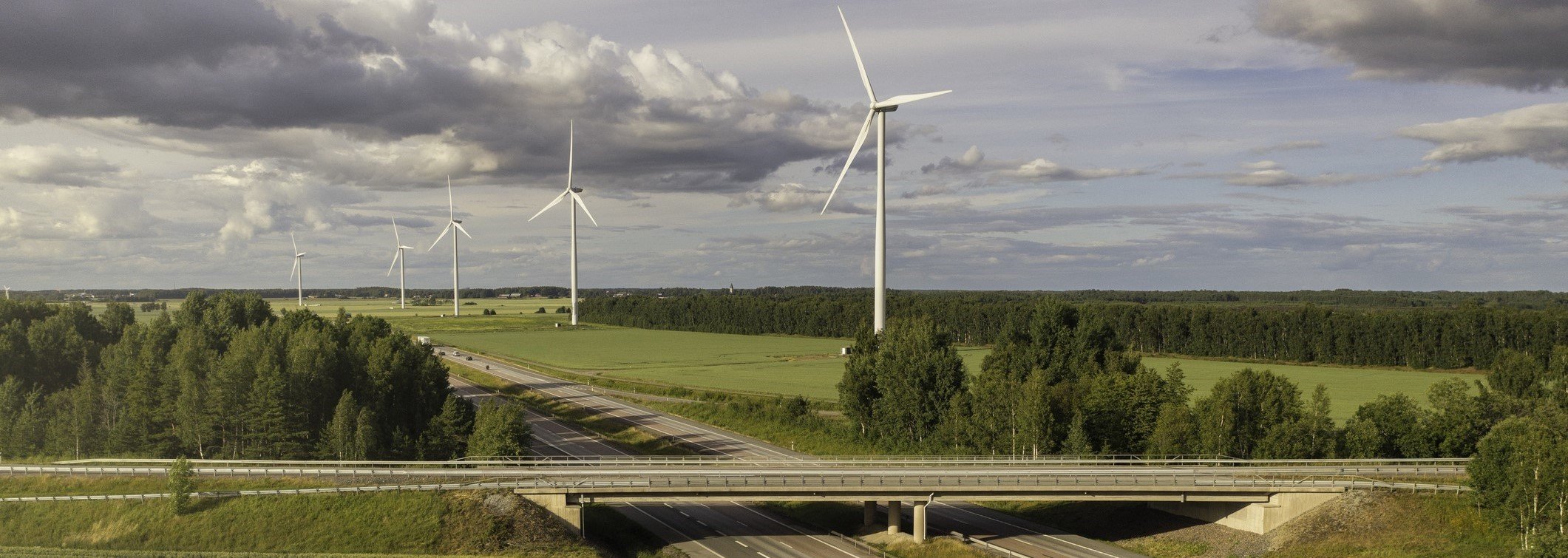
The IPCC’s third and final installment of its landmark Sixth Assessment Report makes it clear: Businesses need to build the foundation for lasting climate action, prioritizing both long and near-term action through their commitments and external initiatives.
Companies well along on their climate action journeys already know that reaching net-zero by 2050 means halving emissions by 2030. But the IPCC’s final report raises the stakes even further. If we truly want to limit warming to 1.5°C, emissions must not only halve by 2030 but also peak by 2025.
Businesses have a tremendous opportunity to step up to the plate. But which strategies will meaningfully reduce emissions, especially in the short term?
Read on for high-impact strategies to reduce your GHG emissions footprint in four key areas:
- Energy efficiency
- Renewable energy
- Transportation
- Materials
Improving Energy Efficiency
Reducing energy consumption throughout your operations is an achievable and meaningful way to lower emissions impact. After all, the cheapest energy is the energy you don’t use. One of the best ways to do this? Focus on improving energy efficiency.
Here are a few easy wins that can significantly reduce Scope 1 and Scope 2 emissions and also result in cost savings:
Use LED technology for lighting. LEDs use over 75% less energy than incandescent lighting, yet many businesses still haven’t made the switch. Given that lighting accounts for nearly 20% of corporate energy use, the emissions and cost-saving benefits are undeniable. This strategy also has a short payback period, meaning you’ll enjoy quick cost-savings.
Retrofit commercial HVAC systems. Businesses can reduce energy consumption by up to 40% by retrofitting HVAC systems. In some cases, retrofitting allows you to use cleaner refrigerants, resulting in additional emissions reduction benefits. Integrating new components into older HVAC system can be a cost-effective alternative to replacing the system outright.
Optimize cooling and heating. Be sure your cooling and heating schedule aligns with times when your employees are actually on site. Many businesses have air conditioning or heating on 24/7, while most employees are only there from 9 to 5. For additional energy efficiency savings, consider installing a Building Automation System.
Now that you’ve checked those off your list, consider the following longer-term energy efficiency strategies:
Decarbonize and electrify equipment. Electrifying commercial building equipment such as your HVAC systems not only drastically lowers emissions impact but also reduces your dependence on fossil fuels, in turn boosting resiliency.
Green building retrofits. Green building retrofits increase energy efficiency, reduce water use, and improve the overall quality of a space in terms of natural light, air, and noise. A few examples include green roofs, rainwater capture systems, passive sunlight, and geothermal energy. In addition to retrofitting existing buildings, you should prioritize facilities with high energy efficiency standards or green building certifications as you consider new facility expansions.
Stay on top of changing ESG requirements
Download our ESG Reporting Frameworks & Regulations Guide.
Renewable Energy
Shifting to renewable energy sources and electrifying our grids is critical if we want to reach net-zero. Your company has a key role to play in spurring this transition. Here’s how your business should approach its renewable energy strategy, in order of greatest impact.
1- CREATE YOUR OWN GREEN ENERGY. The best way to cut both your short and long-term emissions is to create your own source of renewable energy. Installing commercial solar panels is easiest way to do this, and the average payback period is only 5-10 years.
2- WORK WITH LOCAL ENERGY SUPPLIERS. For small business owners, installing commercial solar panels can be a significant upfront investment. If you can’t justify the cost, another great option is to negotiate a renewable energy contract with a local energy supplier. Note that you’ll only be able to do this if you live in a deregulated electricity market.
3- PURCHASE RENEWABLE ENERGY THROUGH LOCAL UTILITIES. Depending on where your business operates, you may even be able to purchase renewable energy directly from your local utility provider. However, the availability of utility-provided renewable energy is greatly influenced by the regional political and regulatory landscape. Some utilities also may not have any green programs given their location, infrastructure, and resources.
4- PURCHASE RECS. If you can’t purchase renewable energy through your local energy supplier or utilities provider, your next-best option is to purchase Renewable Energy Certificates (RECs). RECs are simply an attribute you buy - one REC is created for every megawatt hour of renewable energy generated.
There are two kinds of RECs, bundled and unbundled. Bundled RECs are sold when renewable energy is produced. This means they are tied to the actual creation of renewable energy at a specific time, location, and facility. As such, they are far more impactful than their unbundled counterparts. You can purchase them through your local utility or by contracting with third-party energy suppliers in some states.
Unbundled RECs are sold separately from the renewable energy itself and are available nationally. Although purchasing unbundled RECs can be a cost-effective way to achieve your sustainability goals, they aren’t typically adding new renewable energy to the grid and therefore don't have as positive an impact. Bottom line – use unbundled RECs sparingly and only as a last resort.
Travel & Transportation
Business travel and transportation represents another high-impact area to target for GHG emissions reduction. For office-based businesses, like the services industry, business travel is often the largest source of indirect emissions. In fact, business travel can account for 80% or more of indirect emissions impact in certain industries.
If the pandemic taught us anything, it’s that most business travel isn’t really necessary. Swapping in-person meetings for virtual ones not only significantly reduces emissions but also results in cost savings. These savings can be fed back into the energy efficiency and renewable energy strategies mentioned above. For trips that can’t be avoided, opt for economy over business class and direct flights over cheaper, indirect ones.
If your industry relies on fleet vehicles, such as construction, engineering, and government, start thinking about fleet electrification. Fleet electrification is a key component of the net-zero journey and a meaningful way to reduce Scope 1 emissions. Want to help accelerate the transition to electric vehicles? Check out the EV100 initiative.
Packaging & Materials
A final area to prioritize for short-term emissions reduction is packaging and materials. The raw materials used in products and packaging has an outsized impact on your GHG emissions footprint. For instance, 40% of emissions in the fashion industry come from polyester production, an emissions-intensive, yet commonly used material.
New technologies and materials are emerging every day. Work with your product team and direct suppliers to use lower emissions materials and create more circular goods. Also, be sure to collaborate with industry groups to collectively drive supply-side change. By increasing demand for more sustainable materials, you help make them more rapidly affordable for everyone. Not sure where to start? Eliminate single-use plastics in your operations, products, and packaging.
Historically seen as just a waste problem, it’s become clear that plastic and climate change are inextricably linked. In fact, emissions from plastic production could eclipse the carbon contributions of coal by 2030. By 2050, the plastic industry’s emissions could eat up at least 15% of our global GHG budget.
In short, cutting out materials like plastic not only promotes circularity but also greatly reduces your emissions. Best of all? It’s something you can start working on right now.
Next Steps
We have years, not decades, to avoid the worst consequences of climate change. As a business, there are plenty of ways to do your part. Luckily, nearly all the solutions already exist today. The strategies listed above were chosen because they significantly reduce emissions, have relatively low barriers to entry, and deliver impact during the short window we have to make a difference. But what about Scope 3? Indirect or Scope 3 emissions alone can account for 80-90% of your total GHG impact. Scope 3 includes sources like business travel and product use, but the most common culprit is your supply chain. That’s because many manufacturers, especially in developing countries, power their operations with dirty energy like coal.
Your business can and should partner with suppliers to ensure a just transition to clean energy.
RELATED SOLUTIONS


